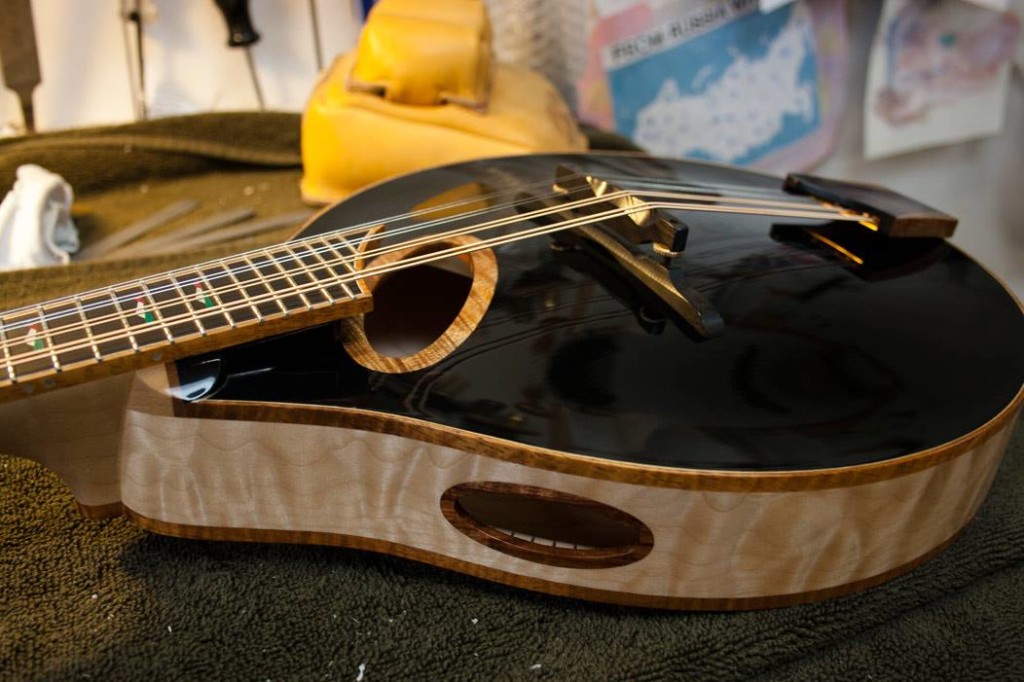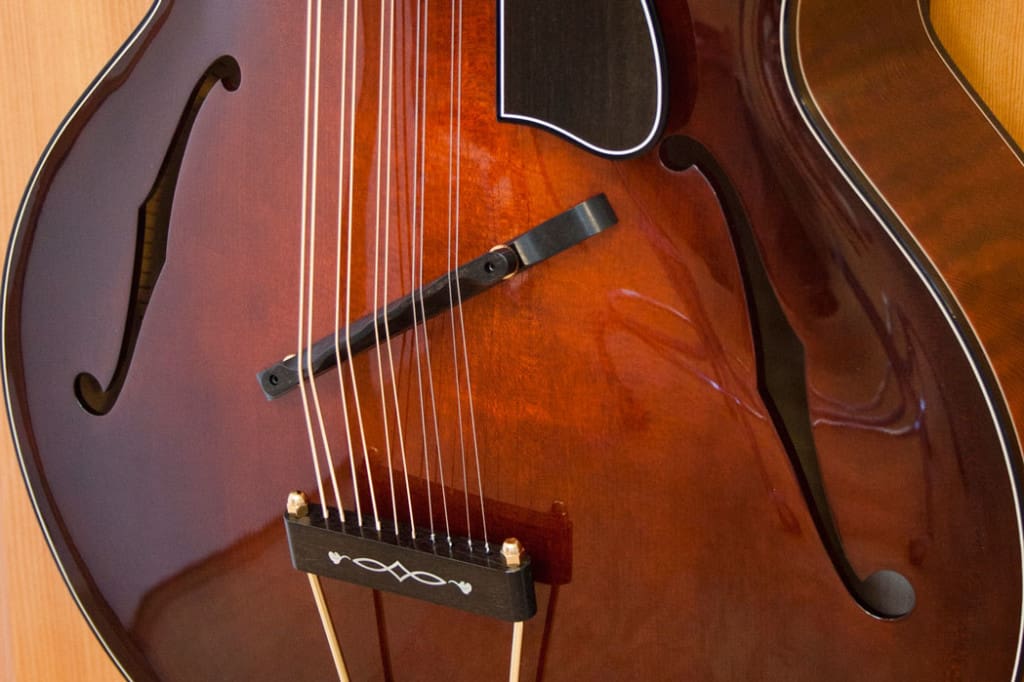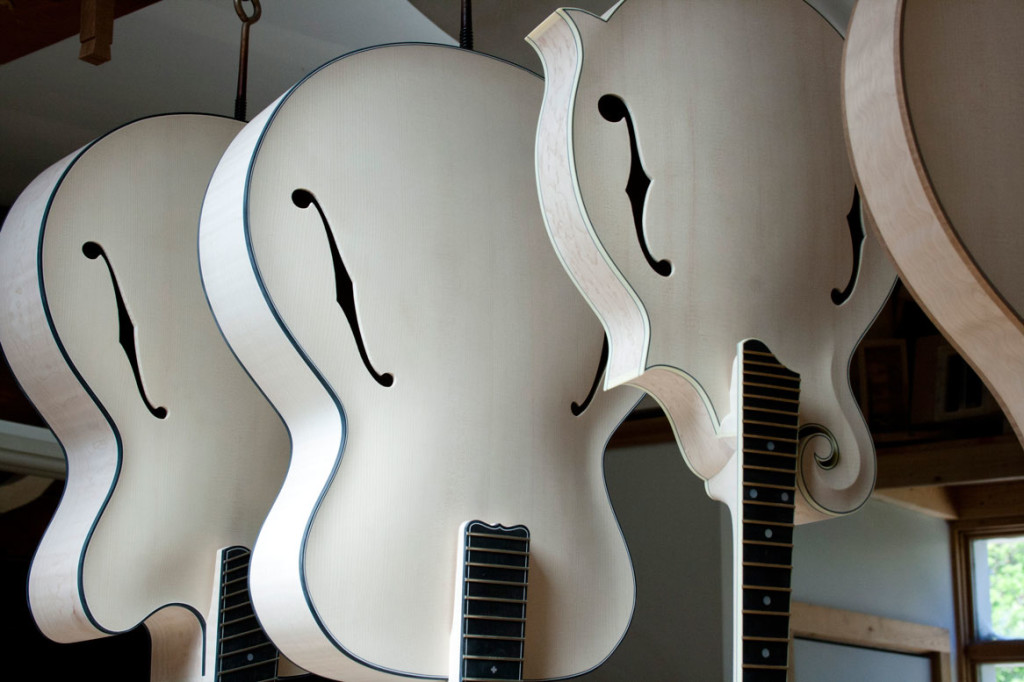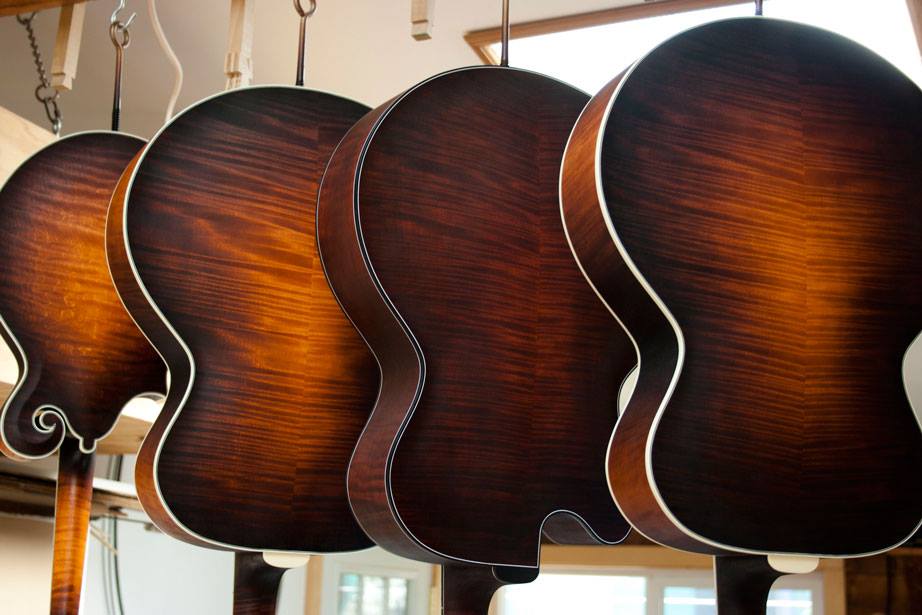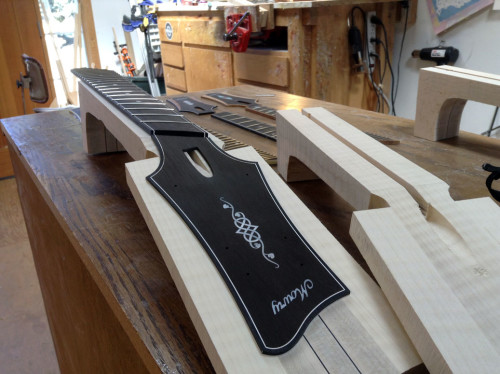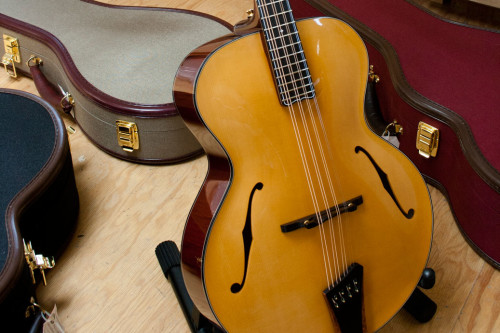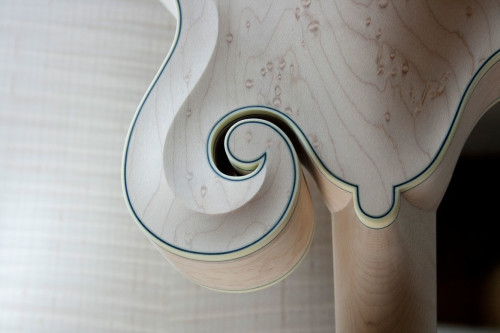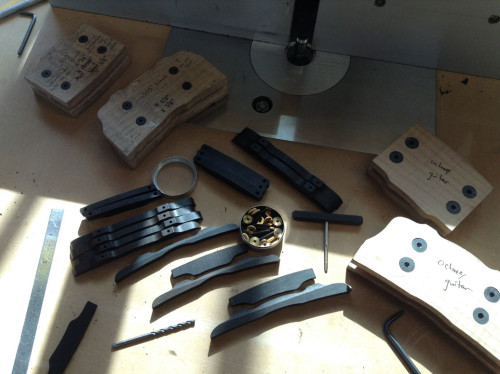Whether he’s building a traditional F-5 style mandolin or an innovative fanned-fret cittern, Andrew Mowry is known for his immaculate workmanship and the impressive tones he’s able to get out of his instruments. The Fretboard Journal decided to check in on the Bend, Oregon builder to hear about some of his most recent projects and find out how this former geologist decided to start hand-crafting instruments.
Fretboard Journal: What are you working on right now?
Andrew Mowry: I build mostly mandolin-family instruments, and for the past several years, that has including lots of guitar-bodied octave mandolins. I just finished up a fanned-fret cittern (a 14″ octave with an added high B string), as well as a more traditional guitar-bodied octave, two mandolas and an F-5. The next batch of instruments will include another octave, a fanned-fret mandocello with a 16″ guitar body, two F-5s and an asymmetrical two-point mandolin.
FJ: How did you get interested in building guitars and subsequently, how did you decide to do it for a living?
AM: I’ve loved trees, wood and music for as long as I can remember. Building instruments always seemed like the natural thing for me to do, and I probably built the first (simple) ones around the age of nine or 10. I never suspected that it could turn into a career, so I pursued other things until 10 years ago, when I began building full-time.
FJ: What did you do before lutherie?
AM: I studied geology and geography, focusing on fluvial geomorphology and fish habitat and stream restoration. The majority of that “career” was just school, really. I worked for various research projects before and after grad school, then worked for a GIS software company in Missoula while my wife was in grad school. I transitioned to lutherie just two years after finishing. Fortunately, I was able to work my way grad school and didn’t have any debt from it!
FJ: Why did you start building mandolins? Do you have a background playing or was it a demand thing?
AM: I played fiddle first (I was really just a hack, in retrospect) and while I started out playing mostly Celtic-influenced fiddle tunes, I got interested in bluegrass in high school and the sound of the mandolin. I had already been interested in woodworking for a while and I thought a mandolin would be a fun project. I was really interested in traditional woodworking and built my first few mandolins with only hand tools. This was in Vermont, where there were plenty of beautiful old hand tools to be had for a song.
I then had another brief career and didn’t do much woodworking for about ten years. Finally, I built a few more mandolins and was able to sell them. In 2005, my wife and I moved to Bend, Oregon. I didn’t have a job there, but orders for mandolins started trickling in. I’ve been fortunate that I haven’t had a time without a backlog since then, so I haven’t looked back!
FJ: What inspired the fanned frets?
AM: The customer who ordered the multi-scale cittern had played one of my standard octaves and was on the wait list for one of those, but decided that he would like the added high B string and would be open to something experimental. I had just returned from Wintergrass where I had played one of Lawrence Smart’s multi-scale mandolas, so I had fanned-frets on my mind. The shorter scale on the treble side makes reaches easier, and the added B makes some reaches unnecessary. When I was playing it, I noticed that it’s really nice for fiddle tuned because so many of them have that B as their highest note. You can just hit the open string rather than having to reach or change position. That’s partly just me being lazy, but it really opens up a lot of possibilities.
The fanned frets are new to me, and they add complexity throughout the build process. The bracing has to be modified, the headstock has to be tilted to the side, the nut and bridge have to be different, etc. It’s all a lot of fun, but requires careful preparation and adds time to the process.
FJ: Tell us more about your workshop.
AM: I live and work in Bend, which is a beautiful spot and a great place to work and raise children. My shop is attached to the house and is the size of a single-car garage. The relatively small space forces me to be efficient, and I’m totally happy with the setup. I like to have lots of natural light, so I have two large skylights that I can also cover with shades if I’m doing a task that requires side lighting, like carving archtops or doing final sanding/detailing of instruments.
FJ: What about your overall design aesthetic?
AM: I prefer simple, sleek designs. That surprises many people because I build a lot of F-5 mandolins, which are pretty over-the-top in terms of design. However, they are quite elegant in their own way. Often customers come to me with elaborate inlay designs, and I do my best to pare them down so they are elegant but not overstated. I think all this is important in terms of sound, too. Any part of an instrument that doesn’t contribute to sound or playability is quite likely to be detrimental.
FJ: Your shop is in the fertile Pacific Northwest. Does that affect your wood buying? Do you use a lot of local spruce?
AM: Having grown up in New England, I was initially a little shocked by the lack of tree diversity in the West. However, we’re indeed lucky that there are some good lutherie woods here. I build with Engelmann spruce a lot, which I chose at first because it is a regional wood. However, after plenty of experimentation I find that it’s my favorite top wood for sound as well. I’ve also used plenty of big leaf maple, and some Claro walnut, both Northwestern woods. I tend to use red maple as my “go-to” back/side/neck wood now, but I’ve had in my mind for a while a “Northwest” model instrument, with all regional woods and regionally-inspired design aspects. I love spending time in the outdoors, and there’s endless inspiration for design here in Oregon. I’ve experimented with harvesting my own tonewoods at various times over the years, but I’ve decided to leave it to the experts, whose backs are generally much stronger than mine.
FJ: What’s your wait time at the moment?
AM: About a year and a half to two years.
FJ: Besides what’s currently on your bench, what else have you been building lately?
AM: I’ve built several archtop guitars over the past four or five years. While I’m not a guitar player myself, I love the L-5s from the ‘20s and I think those are some of the most beautiful instruments I’ve seen. In my teens, I made many other instruments, including banjos, fiddles, mountain dulcimers, drums and flutes.
FJ: Any specific instruments from your past you want to mention?
FJ: There have been some F-5s over the years that I’ve really liked, but it’s getting hard to remember all of them. The 16″ guitar-bodied bouzouki that Colin Meloy [of the Decemberists] plays is one of my favorite larger instruments that I’ve built. It’s a bit of an oddball because of the large body, long scale and oval hole, but all of those things contribute to a really sweet tone while retaining the punchiness typical of an archtop. The long scale can be a hindrance, and makes that instrument better suited for Colin’s singer-songwriter style rather than more melodic playing.
FJ: Anything coming up in the future that you are particularly excited about?
AM: I’m most excited about continuing to refine guitar-bodied octave mandolins and bouzoukis. When I started building them around ten years ago the only other ones I knew about were made by Fletcher Brock and Bill Bussmann [Old Wave Mandolins]. Now there are lots of builders making them, and it’s exciting to see the variations that everyone is producing (as well as the instrument’s increasing popularity with players). The instrument is so open to interpretation that each builder has a unique sound, and it’s really fun contributing to the evolution. I have plans to experiment more with fanned frets, alternative soundhole shapes and variation in arching and body depth in order to customize them for each player.
